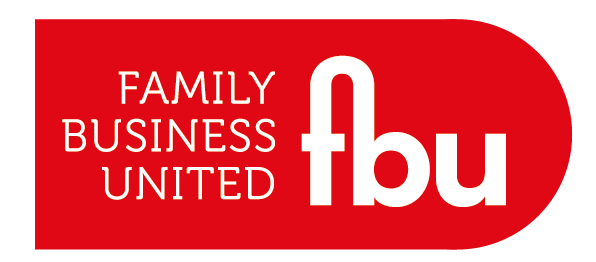Get in touch: nick.mayhew@alembicstrategy.com
Types of inefficient processes
Inefficiencies vary across businesses because they are context dependent. Different types of businesses require different processes. There are however some overarching common inefficiencies that we can identify. Sometimes it comes down to inappropriate processing: where the wrong people are doing the wrong jobs. Delegation is the most common manifestation of this. For example, somebody over qualified retaining tasks, rather than delegating them to others, so that it frees them up to complete other tasks more appropriate to their level.
Resource constraints are another frequent issue, so processing becomes a challenge due to a lack of people. Sometimes there are enough people, but those people don’t have the right knowledge or skills to complete tasks. Money is a constraint, as well as time – people can be too busy, and new processes can take a long time to set into motion. Maybe we are also underutilising technology when it could provide shortcuts for us and shave time off our tasks. Waiting is another inefficiency relating to time. We could be waiting for others to get in contact with us, waiting for holidays to finish, or waiting for people to be free for meetings. Instead, this time could be filled with tasks that add value to our purpose.
It’s also worth considering how inefficiencies show up in our hybrid working world. Before, you might’ve walked to someone’s desk to talk something through, whereas now we are relying more heavily on video calls to do this. It might’ve been quicker and easier to access this feedback in an office environment. How do we restructure our time with these new constraints? Do we use the time we have gained from not commuting as efficiently as possible? These are some questions we can pose to our teams to jump-start some thinking around online efficiency.

Silos are another arena that generates inefficiency. Any breakdown in communication between departments or groups does not lead to effective working. It prevents knowledge sharing and best practice. Bad habits can thrive without discussion, awareness and observation from outside perspectives. Good habits can’t be suggested and shared if no one is there to spot bad habits. Departments might both put time and work into the same task without communication around responsibility, or tasks might get dropped because people assume another department is responsible for their completion.
How to identify inefficient processes
One of the easiest and most “efficient” ways to identify inefficiencies within your business is by asking your teams. Most of the time, people know exactly which processes are inefficient and the effect this is having. Simply asking can open a line of communication around efficiency, which can allow things to shift. Often, awareness of the problem is the first step towards setting some goals. You can also pose the question: what is the biggest drain on your time/energy? This needs to be a conscious analysis. People might spot inefficiencies in processes all the time, but you can’t assume that they will want to fix them. You have to ask to find out where the problems lie.

A particular thing to look out for around processes is putting down/picking up. When you’re working on a task and you put it down and pick it back up again or pass it on to someone else, the task is becoming more and more inefficient. Question how many stages it’s going through, and why this is the case. Always keep in mind the purpose of a task and what you are trying to achieve.
How to address inefficient processes
Once you’ve analysed your processes and identified areas of waste, it’s time to start looking at solutions. Sometimes limitations come from a lack of resource, and this can’t be helped. It’s best to focus on what you can do.
One option is to look at what you already do well. Ask your team, what’s the best way we’re doing that? You can also turn to people in your network. More often than not, they will have resources to offer on how they tackle their own wastes.
Mindset is also helpful in addressing process inefficiency. As you move through projects, keep the purpose in mind, and question whether processes are meeting your needs efficiently. Focus on goals and objectives. If processes aren’t ticking these key points, it could be argued that they are inefficient. Perhaps once we’ve thought about what creates inefficiency, we can flip our current process on its head and explore what doing the opposite of what we are currently doing would look like.
In a more practical sense, you can look at whether you are asking the right people to address the problem. During meetings, have you got the right people in the right room to problem solve? It’s all too easy to include people in meetings who don’t need to be there. Consider who is responsible or accountable for the task at hand. Trust that they will know where inefficiencies lie and ask them to generate ideas that will reduce wastes. They’re far more likely to come up with relevant responses, which is in itself less wasteful than having the wrong people contributing solutions to a problem they aren’t familiar with.
Perhaps spend some time assessing processes through the lens of habit, since they can quite quickly form once something becomes routine. It’s difficult to get people to adopt change, and people adjust in different ways. When someone has done something the same way for a very long time, resistance can almost be expected. People need clear communication around change and like to feel like they’re a part of the decision. Explaining to people that a new process is being implemented to make things easier and quicker for them is a great way to get them on board. Being open to their feedback is key.
Another angle is to tackle inefficiency hypothetically: with any new process, you can put things into place from the start and set things off on a purposeful path. Think about how you are going to get the uptake right. Don’t be afraid to test a solution to a process to see if you achieve the desired outcome.
In summary, inefficiencies can be scattered across all areas of a business and are very context specific. What’s important is to foster an awareness around them in your staff so that they can be mindful of pitfalls when approaching new projects and when they tackle routine tasks. Including them in the analysis of company wastes can allow them to find potential solutions and motivate them to integrate them. Always remember that it is wasteful to have no process in place at all: an inefficient process is a non-existent one.




